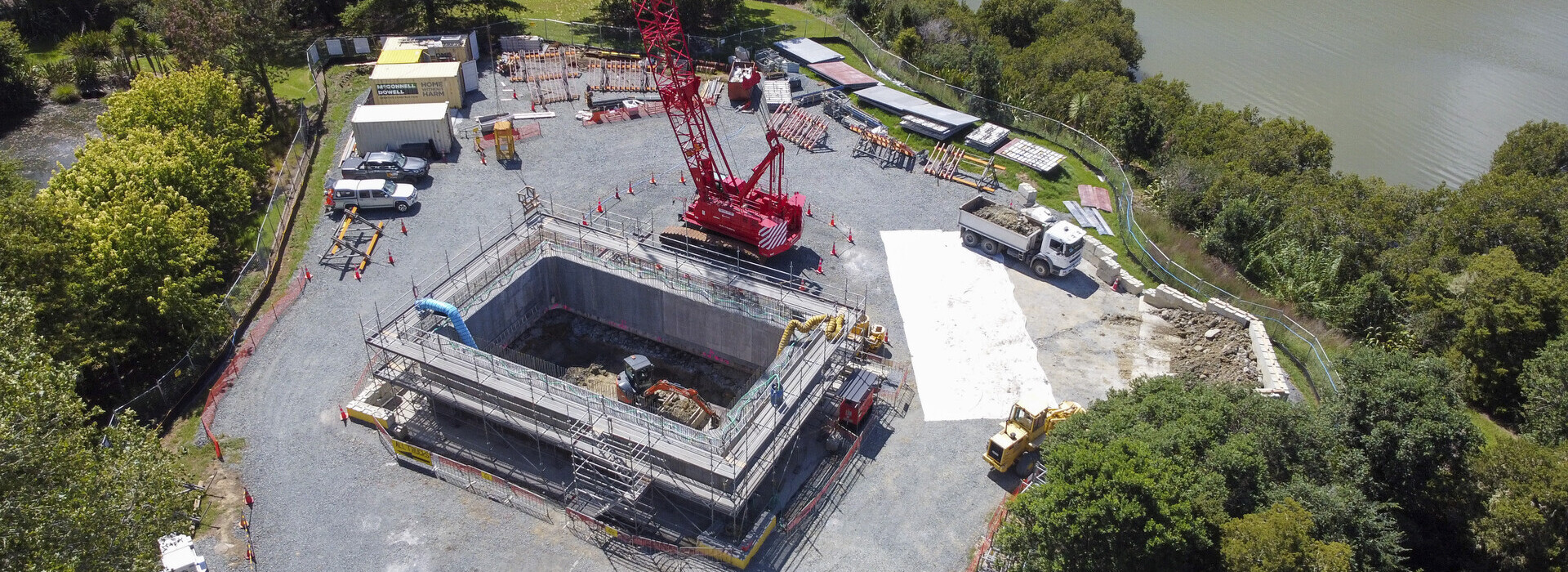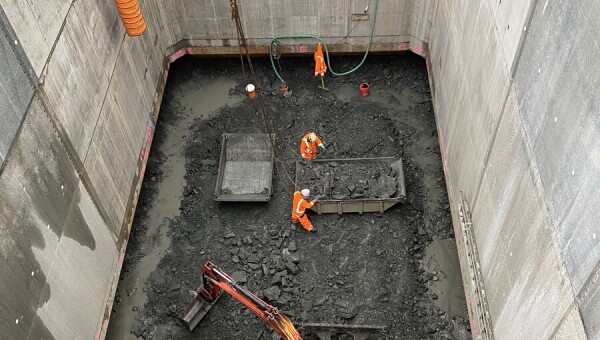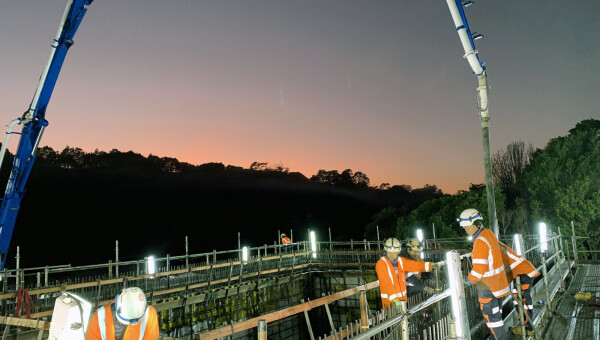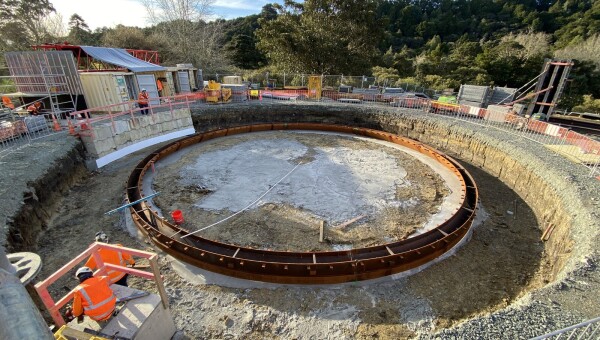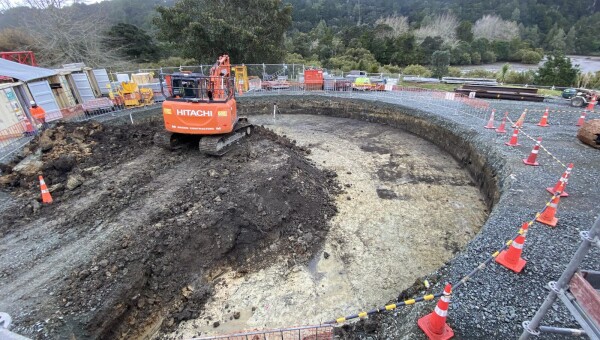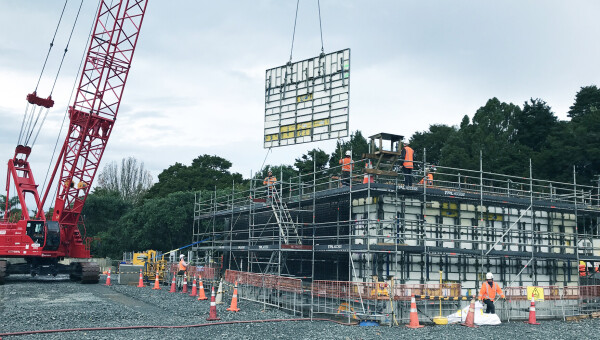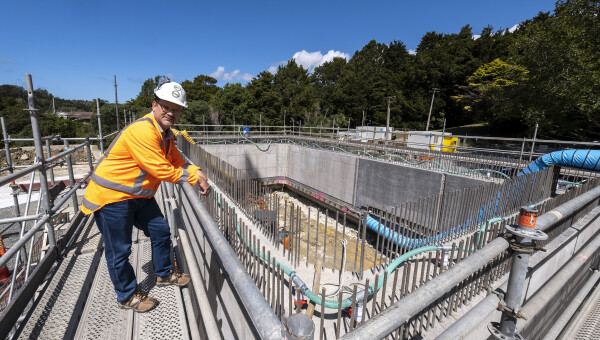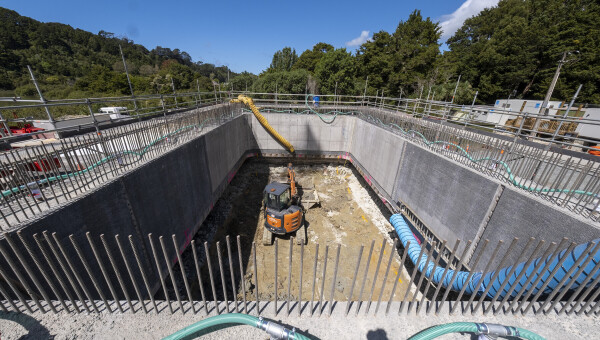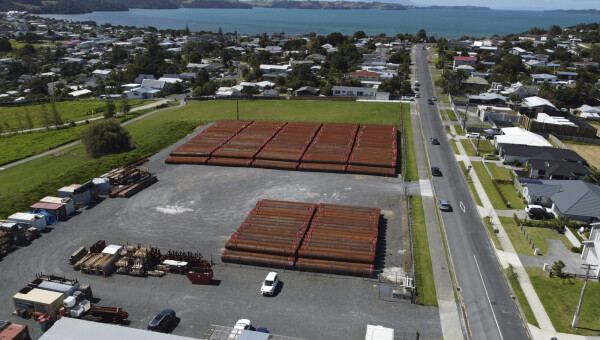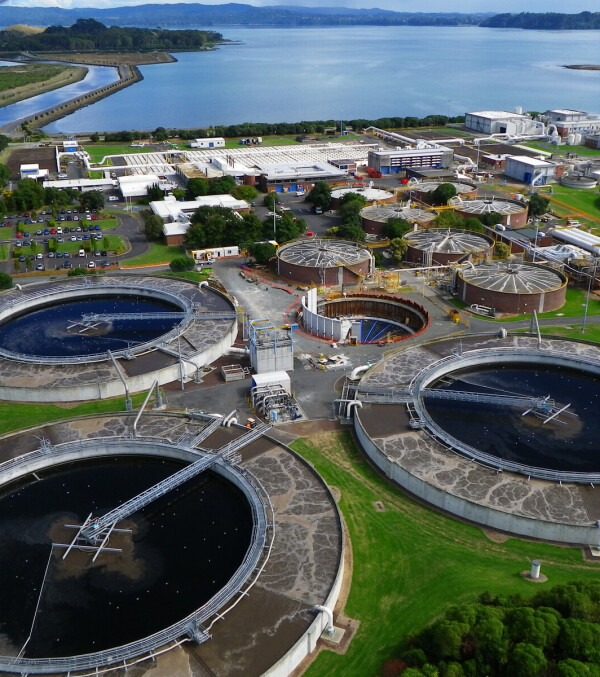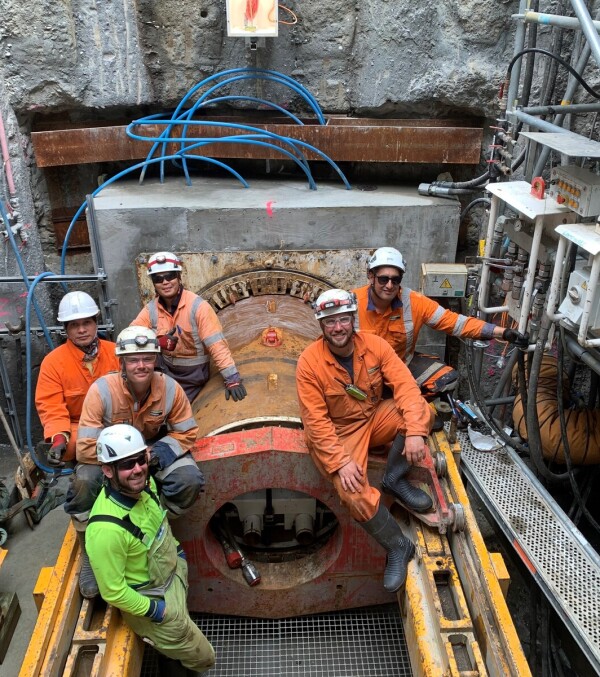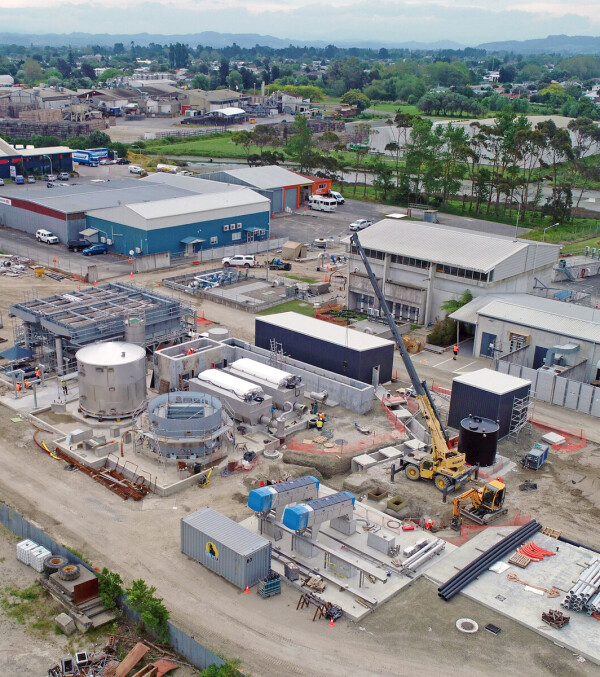|
Customer: Watercare Services Ltd Contract: Design & Construct Location: Warkworth, Auckland |
Fast Facts
|
Using an innovative caisson (sunk shaft) construction method, we designed and delivered the Warkworth Pump Station, part of Watercare's broader scheme to improve the wastewater network from Warkworth to Snells Beach.
We built the new 247 litre per second wet-well / dry-well pump station adjacent to an existing pump station in Lucy Moore Memorial Park, implementing construction strategies and approaches to protect the sensitive park and river environment.
Our scope of work included:
- an above-ground structure 4.4 m high, 9.2 m long and 4 m wide
- structures approximately 12 m below ground including an inlet chamber, gantry crane, drywell, wet well and emergency storage
- an overflow pipe from the pump station to the existing stormwater pond
- ancillary above-ground structures, including an odour control (biofilter), standby generator, transformer, flowmeter chamber, welfare facilities; and
- an access road and carpark
The challenge
The Warkworth pump station site is located within Lucy Moore Memorial Park, adjacent to the Mahurangi River. The park is an open green space that contains walking tracks, a skate ramp and a flying fox. The park is a popular community amenity and provides a thoroughfare to the town centre.
Lucy Moore Memorial Park is named after one of Warkworth’s homegrown heroes. Lucy Moore earned the moniker, ‘mother of New Zealand botany’, receiving national and international recognition for her achievements in botany.
The solution:
We constructed the pump station and storage tank using an innovative caisson (sunk shaft) construction method which provided the following benefits:
- Reduced construction footprint due to a reduction in the working space
- Less noise and vibration impact because there is no significant backfilling required
- Minimised time required on-site, which further reduces overall community impact
- Enhanced safety for site workers and park users
The key to success
We developed our construction methodology with input from specialists and experts to comply with statutory, contractual and consent requirements. This included the development of environmental controls to protect the sensitive park and river environment, engaging an arborist to identify and protect trees and vegetation, iwi consultation, and a strategy for effective stakeholder management of impacted residents and the community.
Award wnning
The project received two prestigious accolades in 2025 - the Water NZ Project of the Year Award and the Civil Contractors New Zealand, Auckland Branch Award, for projects with a value exceeding $50M.
Check out the project's wrap-up video below!

